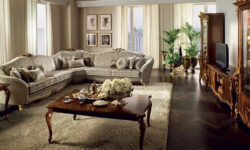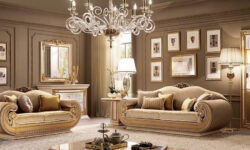
Interior design encompasses various trends and styles, each with its own distinct characteristics. However, certain styles, such as modern and contemporary, are often confused, especially by those less experienced in the field.

Origins and Characteristics
Modern Design:
Modern design emerged from the Modernist movement towards the end of the 19th century. Influenced by German Bauhaus design schools and Scandinavian aesthetics, modern design emphasizes:
- Simplicity and functionality
- Clean lines
- Use of plastic and natural materials
- Moderate use of colors
Contemporary Design:
Contemporary style gained popularity in the 1970s, drawing inspiration from both Modernist and Post-Modernist elements. Influenced by Art Deco, Deconstructivism, and Futurism, contemporary design is characterized by:
- Constant evolution and innovation
- Combination of various styles into a new, bold aesthetic

Main Differences
- Color Palette:
- Modern: Neutral and earthy tones like brown, golden hues, rust, and olive green are common.
- Contemporary: Utilizes a variety of colors including black and white, often with bold and bright accents, tailored to desired mood.
- Lines and Shapes:
- Modern: Minimalist approach with clean, simple lines and geometric shapes.
- Contemporary: Features more fluid and dynamic lines, with a focus on curved and rounded shapes for a modern yet innovative look.
- Materials:
- Modern: Incorporates natural materials like fine wood, leather, and fabrics alongside plastic and metal elements, inspired by the industrial period.
- Contemporary: Utilizes a diverse range of natural materials, such as cedar wood, and may include steel finishes for added sophistication.
Similarities
Both modern and contemporary design share certain commonalities:
- Emphasis on orderly and comfortable interiors with simple yet elegant furnishings.
- Preference for clean shapes and minimal decorations.
- Open and airy layouts with a balanced selection of furniture and accessories.

Conclusion
While modern and contemporary design have some overlapping features, they are distinct styles rooted in different historical periods. Understanding the nuances of each style is crucial for creating cohesive and harmonious interior spaces that reflect the desired aesthetic and mood.













